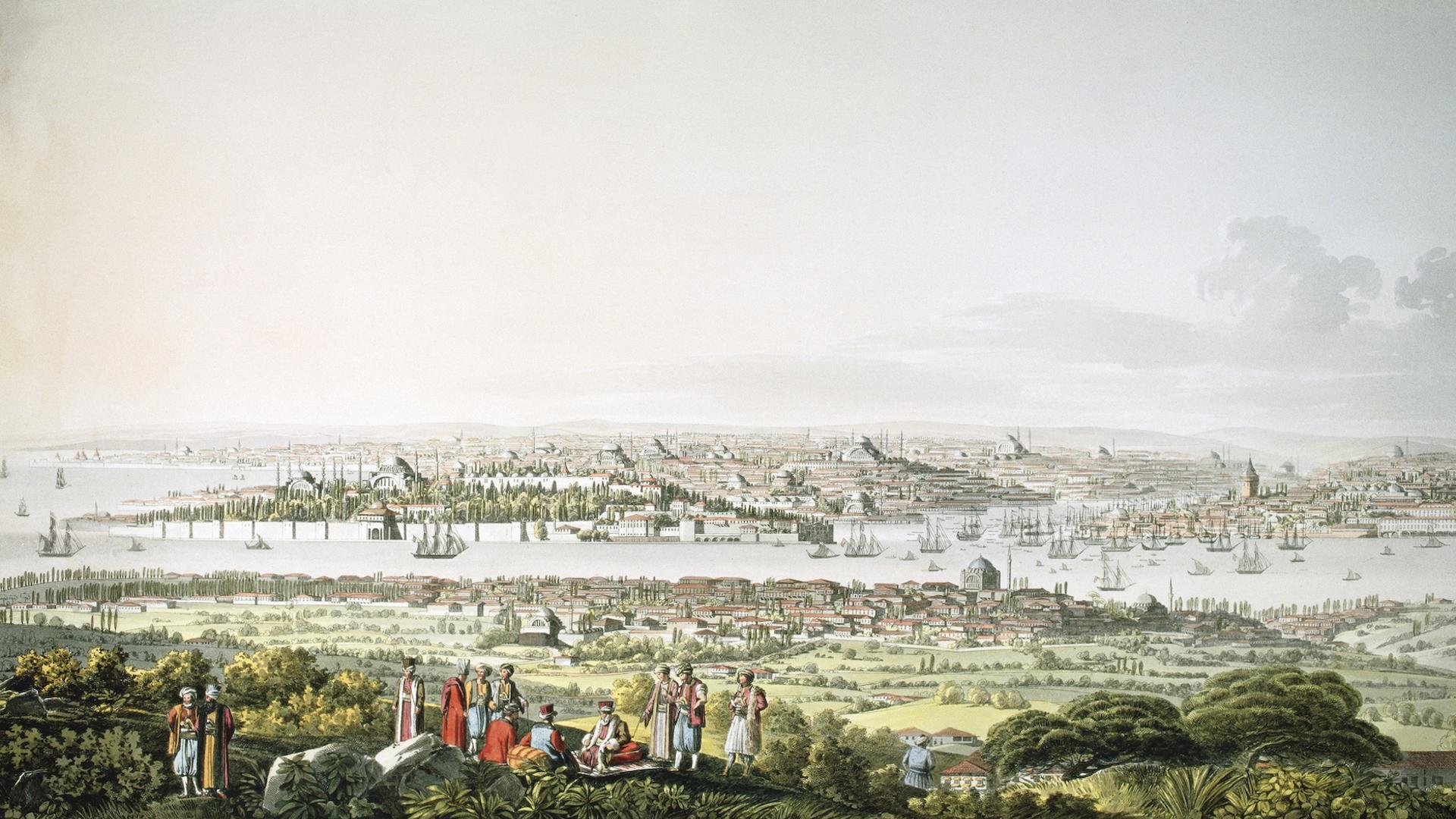Istanbul was formerly known as Byzantium, an ancient Greek colony. Rumour has it that King Byzas of Megara “took his colonists here in the 7th century BCE to establish a colony named Byzantium,” according to the All About Istanbul website.
An oracle of Delphi had told Byzas “to settle across from the ‘land of the blind’ and Byzas believed earlier settlers on the Asian side – of Chalcedon – must have been ‘blind’ for overlooking the superb location at the entrance of the Bosporus strait, only access to the Black Sea,” suggests All About Istanbul.
Archaeologist and editor of ‘Arkeoloji ve Sanat’ (Archaeology and Art) magazine, Nezih Basgelen, has compiled and sent some information via email to TRT World. He says that the earliest name given to the historical peninsula that Istanbul is built on, was Byzantion/Bizantion. The name is supposedly derived from the Thracian name of Byzas/Vizas. According to old rumours, the city was established by King Bizas (possibly a variation on Byzas), the son of demigod Semestras raised by Thracian Buzie.
As for the name Istanbul, it came much later, says Professor Yakoob Ahmed of Istanbul University’s theology department, who teaches Islamic and Ottoman History there.
After Byzantion, when the city was under Roman rule, it was re-named by Roman emperor Septimus Severus as Augusta Antonina. This was after his son. When the seat of the empire moved to the city in AD 330, it was labelled Secunda Roma (Second Rome). It was called Nova Roma (new Rome in Latin) starting from the fifth century, and its citizens, the Romaios. The name, however, did not stick.
Bizantion was a Thracian name, while in Ottoman papers, the Arabic and Armenian forms were also Byzantia, Byzandia, Buzantiye, Puzanta, Buzantis. From Islamic sources, one learns that there were others, too, such as, Rûmiyyetü’l-kübrâ (Grand Rome), Taht-ı Rûm (Seat of Rome), Gulgule-i Rûm (sound of Rome) originating from Nova Roma.
Then, of course, there was Constantinopolis (Latin)/Constantinople (English). The name was derived from the Roman Emperor Constantine the Great, who made the city the capital of his empire (AD 306 to 337). It was a common name and became official. The derivative of Konstantiniyye was used by Arabs and Persians, while the Ottomans utilised it in money and official correspondence.
Constantinopolis was the prevalent name used throughout Roman and Byzantine times, and the West used it for much longer than that, even when the city was under Ottoman rule (from AD 1453).
Famously, the Ottoman Empire used the variant of Konstantiniyye until the establishment of the Republic of Turkey. According to the Encyclopedia Britannica, “until the Turkish Post Office officially changed the name in 1930 … the city continued to bear the millenary name of Constantinople.”
“We are not sure how [the name Istanbul] was developed as it emerged from the Greek and we are not sure how far it goes back,” Ahmed says. “It means to the city, so if you see the word Constantinople it has the word Stan and Pol in it as it was called Constantinopolis. It simply means I Sten Pol meaning within the city, probably meaning within the old city walls.”
Locals in Constantinople referred to the city as I Sten Pol (within the city) from the 10th century, as evidenced in Armenian and Arabic sources (without the initial I-) and Ottoman sources, too. The “I Sten Pol” eventually morphed into one word, according to Marek Stachowski, Robert Woodhouse, authors of “The Etymology of İstanbul: Making Optimal Use of the Evidence”. In summary, it can be said that the Greek way of referring to Constantinople as “the city” carried over to others.
“When the Ottomans conquered Istanbul they by and large kept the old Greek names such as the Bosporus, Uskudar and of course Hagia Sophia,” Ahmed continues. “Halil Inalcik makes the claim that Fatih attempted to popularise the name ISLAMbul and that was used, but was never made official.”
“In reality the Ottomans were comfortable using the Ottomanised/Arabised name of Constantinople which they called Constantiniyye. They called it other names too such as Payitaht [meaning “capital] and Asitane but these were never officially used,” Ahmed explains.
According to a late scholar who spoke to the local press in 2012, during the Ottoman era the most common name for the city was the Arabic version of Constantinopolis, Konstantiniyye, and that it was also referred to as ‘Dersaadet’, the city of happiness, and big dervish convent, ‘Asitane’. Ottoman sultans did not get stuck on names – there was, though, one exception. “Sultan Mustafa the Third used ‘the city of Islam’ Islambol in his imperial writings.” The root of “Istanbul” is ‘stinpolis’ in Greek, and it means a form of the phrase “to the city”.
The city – in reference – is the city within city walls. “At the time, they never called the places outside city walls Istanbul. That is the main mistake nowadays. When they say the other side, they are never referring to Kadikoy [on the Asian side] but to Galata. When they refer to crossing over to the other side, they mean from Karakoy to Galata, Galata to Kuledibi. There is no Taksim yet, there is Uskudar. And there are seasonally used Princes’ Islands and villages on the Bosporus. That is, the Bosporus is not considered Istanbul.”
“Colloquially, it is ‘şeher’. When someone says he is going to Istanbul, he means ‘within the city walls’. Someone in Kadikoy says ‘I am going to Istanbul today’ and someone in Taksim says ‘I am going down to Istanbul today’. I find that a greater distinction,” scholars say.










Discussion about this post